LTC Muller, Henry J.
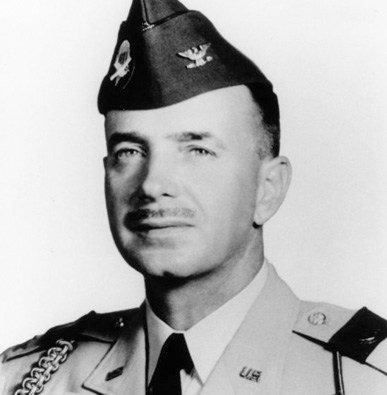
G-2, 11th Airborne Division
April 7, 1917 - January 31, 2022 (age 104) - < ahref="https://usobit.com/obituaries-2022/bg-henry-j-muller-jr-april-17-1917-january-31-2022/" target="_blank">Click For Obituary
Citations: Distinguished Service Medal, Silver Star, Legion of Merit, Bronze Star, Air Medal, and the Purple Heart, World War II Victory Medal, American Campaign Medal, Asiatic-Pacific Campaign Medal. He was inducted into the Hall of Fame in 2017.
Bio: BRIGADIER GENERAL HENRY J. MULLER US Army, Retired

Born in Philadelphia, Pennsylvania, Henry Muller, 103 years old this year (2020), entered the Army as a second lieutenant from the Infantry Reserve in 1940 and was commissioned in the Regular Army in 1942.
In May 1943, during World War II, then Major Muller was assigned as the G-2 of the 11th Airborne Division in the Pacific, a position he held until the end of the war. He was promoted to Lieutenant Colonel in September 1944.
When told about a Japanese prison camp at Los Baños, 30 miles behind enemy lines on Luzon in the Philippine Islands, he personally gathered intelligence from photo reconnaissance, guerilla reports, maps, and scouting missions conducted by his section’s Provisional Reconnaissance Platoon. In collaboration with the Division’s G-3, Muller developed a plan for a surprise threeprong land, amphibious, and airborne attack on the camp. Launched on February 23, 1945, the successful raid liberated 2,147 American and Allied civilians with almost no casualties. Nearly 50 years after the raid, Gen. Colin Powell, Chairman of the Joint Chiefs of Staff, called the raid “the textbook airborne operation for all ages and all armies,” and the 11th Airborne Division commander, General Joseph M. Swing, recalled that it could not have succeeded “without perfect intelligence.”
Following the war, Muller served as Assistant G-2 of the US Eighth Army during the occupation of Japan. He returned to the United States in 1947 and was assigned as Assistant G-2, Army Ground Forces, at Fort Monroe, Virginia. From 1950 to 1953, Lt. Col. Muller was appointed Special Assistant for Current Intelligence to the Director of the Central Intelligence Agency. In this capacity, he helped prepare and present the weekly intelligence briefings to President Harry Truman.
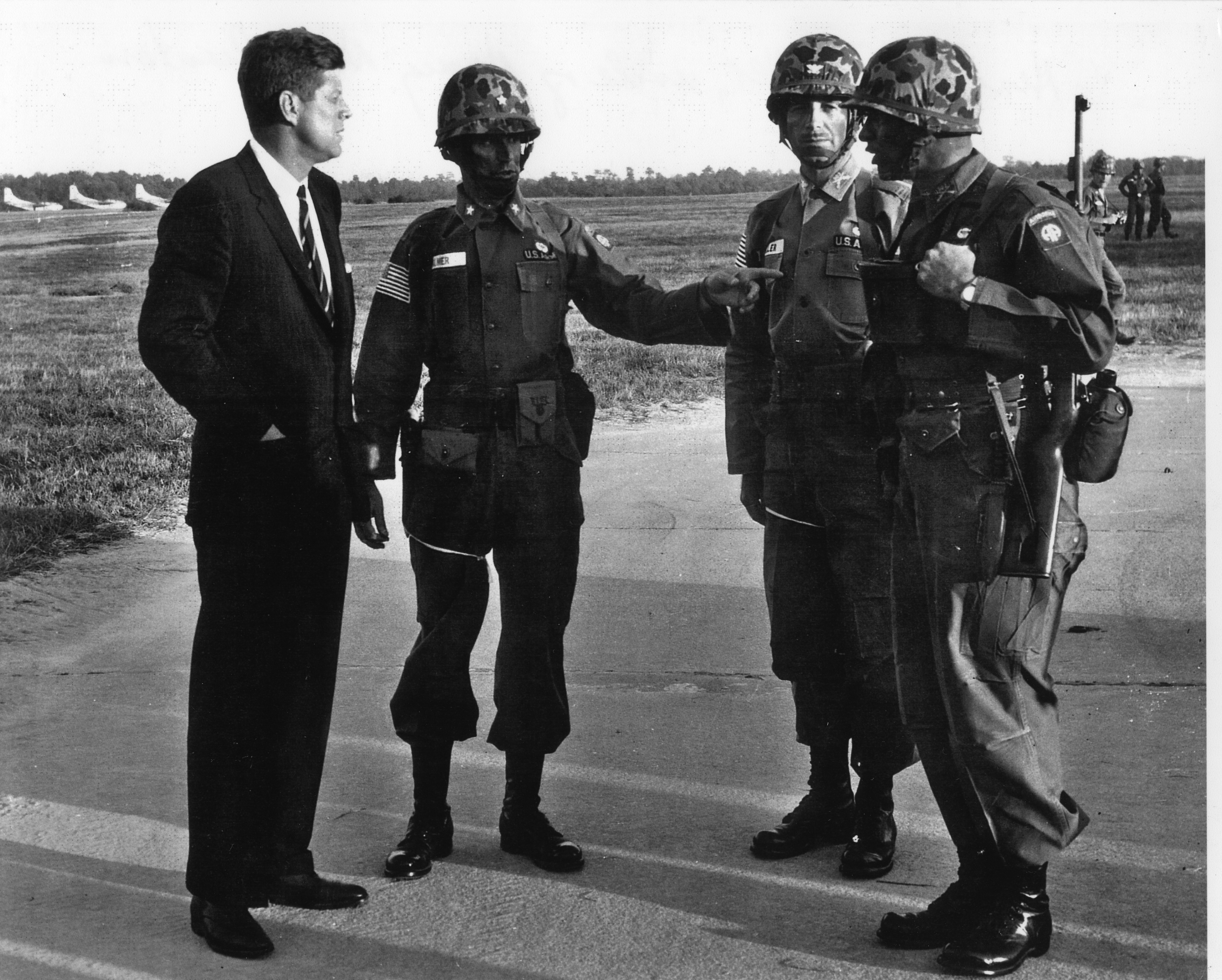 After completing the Spanish course in the Army Language School, he made use of his language training in El Salvador, the Dominican Republic and Argentina, as well as in the Panama Canal Zone as Commandant of the Army's Jungle Warfare Training Center. During the Cuban Missile Crisis, then Col. Muller commanded the 503rd Parachute Infantry Regiment in the 82nd Airborne Division. His regiment was designated to be first to jump into Cuba shortly before the operation was canceled when Soviet freighters carrying missiles to Cuba turned back (Col. Muller could actually see the Russian ships with the missiles onboard sailing towards the USN picket ships before they stopped then turned around).
After completing the Spanish course in the Army Language School, he made use of his language training in El Salvador, the Dominican Republic and Argentina, as well as in the Panama Canal Zone as Commandant of the Army's Jungle Warfare Training Center. During the Cuban Missile Crisis, then Col. Muller commanded the 503rd Parachute Infantry Regiment in the 82nd Airborne Division. His regiment was designated to be first to jump into Cuba shortly before the operation was canceled when Soviet freighters carrying missiles to Cuba turned back (Col. Muller could actually see the Russian ships with the missiles onboard sailing towards the USN picket ships before they stopped then turned around).
In the picture above-right, President John F. Kennedy visited Ft. Bragg, North Carolina on October 12, 1961, to asses the readiness of the 82nd Airborne Division during the Cuban Missile Crisis. General Bruce Palmer, just to President Kennedy's right, presents Colonel Muller, second from the right, in full combat gear with face painted, as well as an unknown trooper (General Muller couldn't remember who at this time).
After his promotion to Brigadier General in March 1967, Gen. Muller served as Assistant Division Commander of the 101st Airborne Division in Vietnam and commanded the US Army Advisory Group in the I Corps Tactical Zone. His final assignment was Commanding General of the Infantry Training Center at Fort Polk, Louisiana, until his retirement in July 1971.
In 1975, Gen. Muller (then of Santa Barbara, California) was presented with a problem: His wife, Cathryn, who was in her 60’s, was unable to manage a wheelbarrow in their stable without it tilting and causing back pain. Because he knew how much his wife loved her stable work, Gen. Muller created the first easy-to-use, lightweight, durable and well balanced stable cart on the market. He patented his new product the Muller’s Stablemate™ and began selling his famous design at nearby stables and ranches. Since then the concept has spread around the world! https://www.smartcarts.com/about-us.html
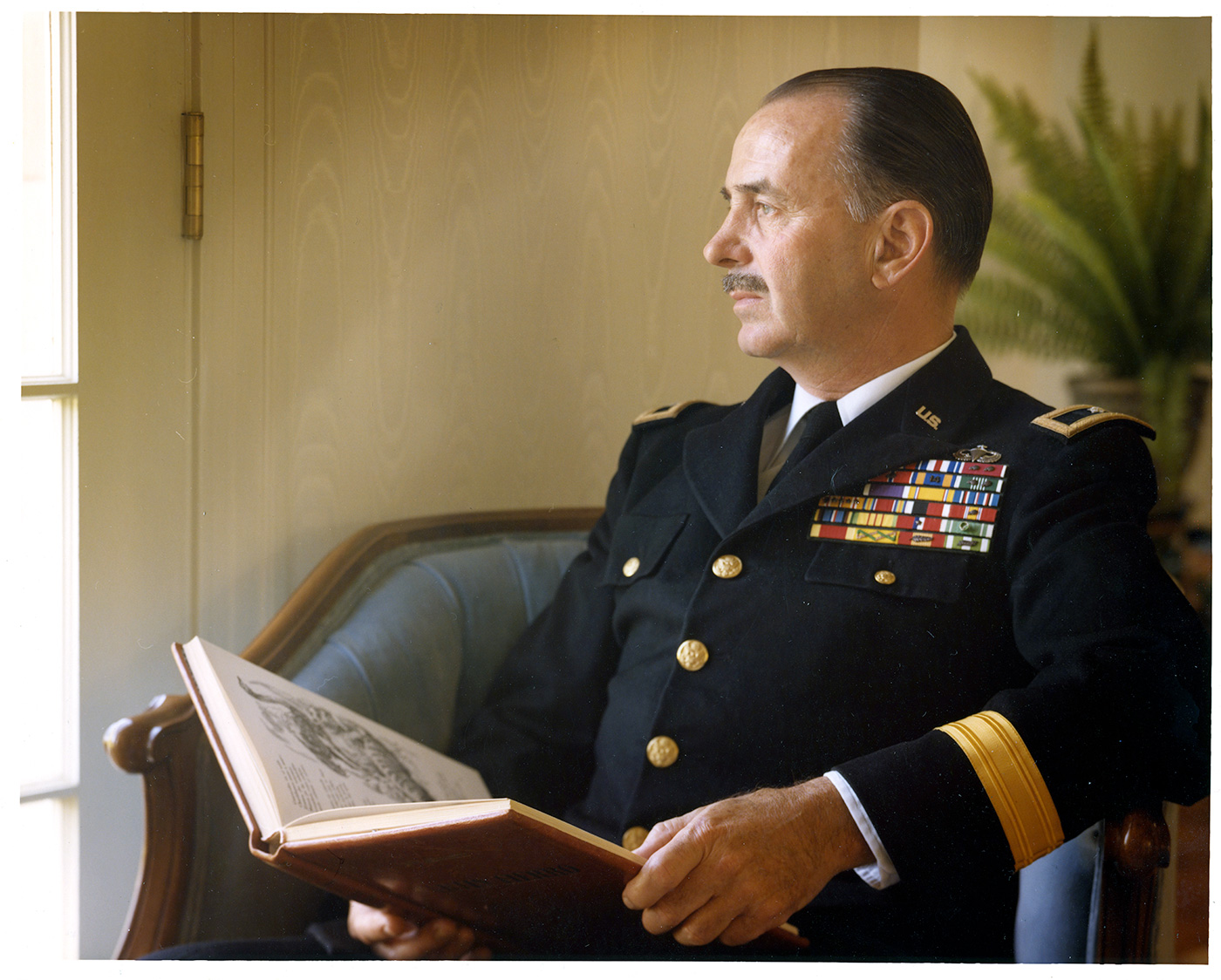
|
|
|
|
|
|
To learn more about Henry's historic unit and the intrepid men who fought in it, you can order Jeremy C. Holm's new book, WHEN ANGELS FALL: From Toccoa to Tokyo, The 511th Parachute Infantry Regiment in World War II by visiting our online store or purchasing a copy wherever books are sold.
Obituary: Brigadier General Henry J. Muller, Jr. - April 17, 1917-January 31, 2022
BG Henry Muller was born on April 7, 1917 in Cynwyd, Pennsylvania, a western suburb of Philadelphia. He moved with his family to Santa Barbara, California in 1927. He received a BA degree in Geology from UCLA, and an MA in Political Science from George Washington University. General Muller entered the Army as a second lieutenant from the Infantry Reserve in 1940. He was commissioned in the regular Army in 1942 and served in the 511th Parachute Infantry Regiment under his good friend Colonel Orin D. "Hard Rock" Haugen.
Later in World War II, Muller served as G2 (Intelligence Officer) of the 11th Airborne Division in the Pacific under Major General Joseph May Swing. It was in this capacity that he planned and help execute the Raid on the Los Banos Prison Camp on February 23, 1945 in which over 2200 American internees were rescued and brought safely from 30 miles behind enemy lines. During the initial occupation of Japan, he served as assistant G2 of the American Forces, the U.S. Eighth Army. Upon his return to the United States, he was assigned to the Headquarters for the Army Ground Forces and later appointed Special Assistant for current Intelligence to the Director of the Central Intelligence Agency. In this capacity he helped prepare and present the weekly intelligence briefings to President Truman. After completing the Spanish course in the Army Language School, he made use of his language training in El Salvador, the Dominican Republic and Argentina, as well as in the Panama Canal Zone as Commandant of the Army’s Jungle Warfare Training Center in which instruction was conducted in both Spanish and English.
During the Cuban Missile Crisis, then-Colonel Muller was a regimental commander in the 82nd Airborne Division. His regiment, the 503rd Parachute Infantry was designated in the pending plans to be first to jump into Cuba. President Kennedy visited his regiment in Fort Bragg, North Carolina, shortly before the operation was called off when the Soviet freighters carrying missiles to Cuba turned back. After attending the Army War College, he was assigned to the Army General Staff in Washington.
During the war in Vietnam, then-General Muller served as Assistant Division Commander of the 101st. Airborne Division. On his return to the United States he served as Commanding General of the Infantry Training Center at Fort Polk, Louisiana, until his retirement in July of 1971. General Muller’s awards include the Distinguished Service Medal, Silver Star, Legion of Merit, Bronze Star, Air Medal and the Purple Heart. After his retirement in Montecito, California, in 1971, he became active in community affairs serving for many years as a Director of the Montecito Association and Trustee of the Montecito Foundation. He was elected to the Montecito Water Board in 1977 and served as Director and President of the Montecito Water Board and the Lake Cachuma Operations and Maintenance Board for 20 years. Upon his retirement in 1997, his service to the community and to the Nation was recognized in a Joint Resolution by the California State Senate and Assembly. He married Cathryn M. Cathey of Charlotte, North Carolina in 1950. They have two sons: Henry J. III, an environmental engineer, and Robert Allen (Deceased), an attorney. Private services were held at the Santa Barbara Cemetery where Brigadier General Henry J. Muller Jr. was laid to rest.
To learn more about the 11th Airborne Division in World War II, please consider purchasing a copy of our books on the Angels:
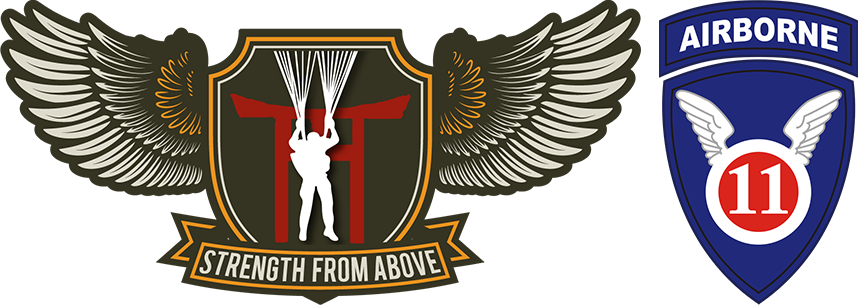
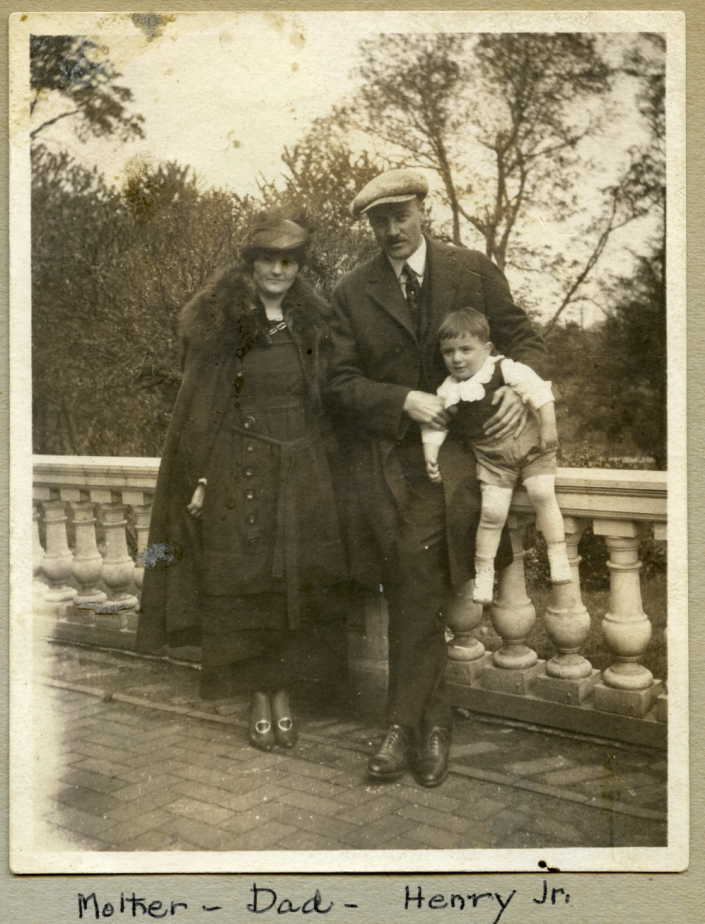 Henry Muller with his parents, Henry John Muller and Edith Hunter Smith.
Henry Muller with his parents, Henry John Muller and Edith Hunter Smith.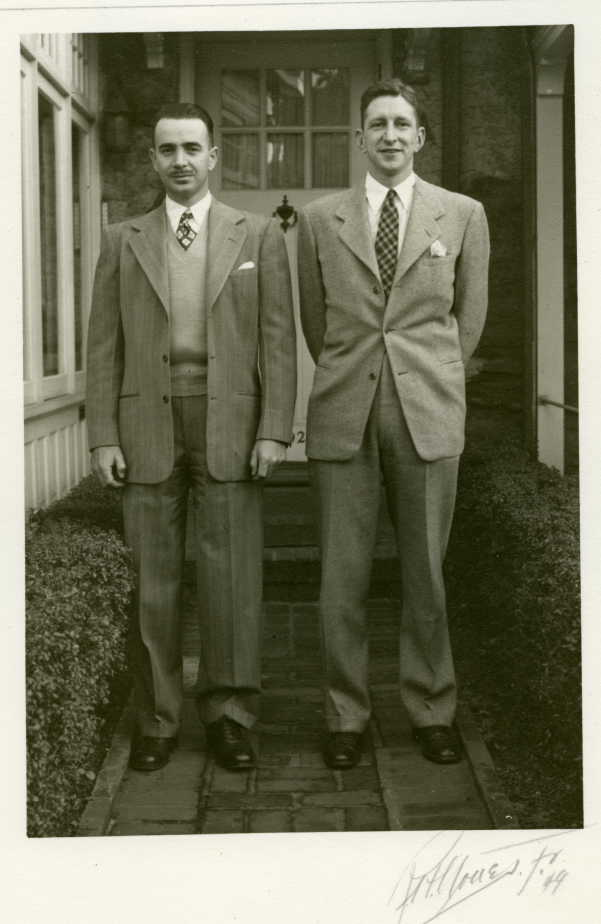 Henry Muller on the left with an unknown companion
Henry Muller on the left with an unknown companion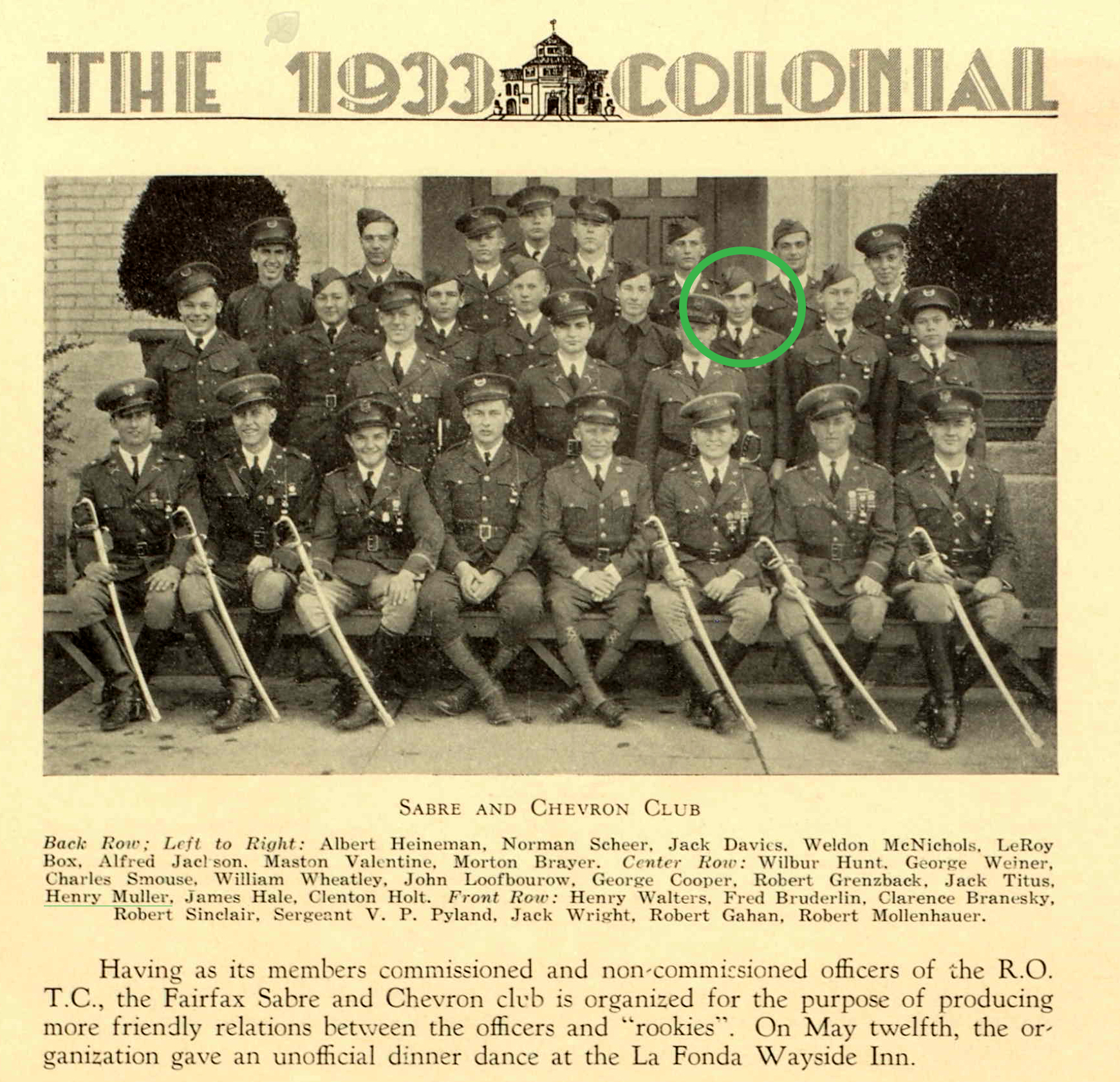 Henry Muller's Fairfax High School yearbook for 1933 listing Henry as a member of the Sword and Chevron ROTC club
Henry Muller's Fairfax High School yearbook for 1933 listing Henry as a member of the Sword and Chevron ROTC club
